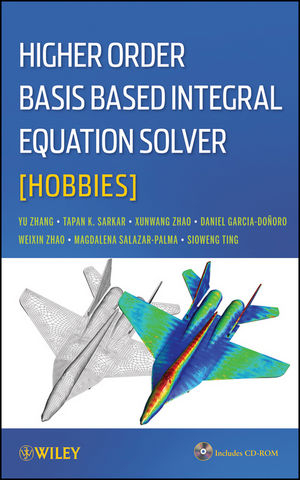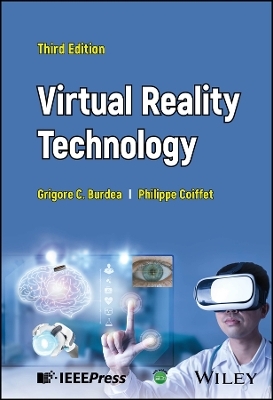
Higher Order Basis Based Integral Equation Solver (HOBBIES)
John Wiley & Sons Inc (Verlag)
978-1-118-14065-9 (ISBN)
The latest in parallel EM solutions with both in-core and out-of-core solvers
The solution of complex electromagnetic (EM) problems requires one to address the issues related with numerical accuracy and efficient distribution of the solution procedure over multiple computational nodes. With the advent of multicore processors and high performance computing (HPC) technology, the EM software designers need to know how to add new functionality to computational EM codes so that they can run efficiently on these new processors.
Higher Order Basis Based Integral Equation Solver [HOBBIES] presents a road map for the analysis of complex material structures using the high-performance parallel simulation software known as HOBBIES. Focusing on the Method of Moments (MoM), the book features new parallel programming techniques and user-friendly code with superior capabilities for solving challenging EM radiation and scattering problems. It provides readers with complete guidance on how to extend the capability of MoM and achieve faster and more accurate EM analysis and utilize multicore CPUs on desktop computers. Complete with an academic version of the HOBBIES software, this book:
Explains the unique features of the higher order basis functions in the solution of integral equations in a MoM context
Shows how to generate a properly load balanced parallel computational procedure for MoM matrix filling and matrix equation solving in both in-core and out-of-core implementation
Presents a professional graphical users interface (GUI) for generating the geometrical structure based on NURBS modeling
Illustrates various automatic meshing procedures based on an a-priori defined error between the actual geometry and the meshed structure
Outlines all the key features of the HOBBIES software, including multiple optimization procedures for EM synthesis
The bottleneck of traditional MoM arises from the lack of memory in computers for solution of large problems. This is mitigated by using higher order basis functions and out-of-core solver in HOBBIES. HOBBIES has the capability to perform numerically accurate EM simulations using thousands of CPU cores in an HPC environment using a properly load balanced out-of-core solver. In this way, it provides a cost-effective choice for addressing modern engineering and scientific challenges that arise from the extremely complicated real-life applications.
YU ZHANG, PhD, is a professor in the School of Electronic Engineering at Xidian University in Xi'an, China. TAPAN K. SARKAR, PhD, is a professor in the Department of Electrical Engineering and Computer Science at Syracuse University, New York, USA. XUNWANG ZHAO, PhD, is an associate professor in the School of Electronic Engineering at Xidian University, Xi'an, China. DANIEL GARCIA-DOÑORO is a PhD student in the Department of Signal Theory and Communications at Universidad Carlos III de Madrid in Madrid, Spain. WEIXIN ZHAO is a PhD student in the Department of Electrical Engineering and Computer Science at Syracuse University, New York, USA. MAGDALENA SALAZAR-PALMA, PhD, is a professor in the Department of Signal Theory and Communications at Universidad Carlos III de Madrid, Spain. SIOWENG TING, PhD, is an assistant professor in the Department of Electrical and Computer Engineering at the University of Macau, China.
Preface xv
Acknowledgments xxi
Acronyms xxiii
Chapter 1. Electromagnetic Modeling of Composite Metallic and Dielectric Structures Using Higher Order Basis Functions 1
1.0 Summary
1.1 Integral Equations for Dielectric Structures
1.2 A General Formulation for the Analysis of Composite Metallic and Dielectric Structures 5
1.3 Geometric Modeling 8
1.4 MoM Modeling of the Structures 14
1.5 Description of Higher Order Basis Functions 21
1.6 Testing Procedure 28
1.7 Modeling of the Excitations 35
1.8 Examples Illustrating the Requirements of the Geometrical Modeling 39
1.9 Examples Illustrating the Salient Features of the Higher Order Basis Functions 43
1.10 Performance of the PMCHW Formulation Using Higher Order Basis Functions for Different Values of the Dielectric Constants 48
1.11 Performance of the PMCHW Formulation at Very Low Frequencies Using Higher Order Basis Functions for Dielectric Bodies 50
1.12 Evaluation of Antenna and Scatterer Characteristics 52
1.13 Conclusions 55
References 55
Chapter 2. Parallel In-Core and Out-of-Core LU Factorization for Solving a Matrix Equation and the Corresponding Parallel Matrix Filling in HOBBIES 57
2.0 Summary 5
2.1 Matrix Equation Resulting from a MoM Code 58
2.2 In-core Matrix Equation Solver 58
2.3 Parallel Implementation of an In-core Solver 60
2.4 Data Decomposition for an Out-of-Core Solver 64
2.5 On-slab, Left-looking, Out-of-core LU Algorithm 66
2.6 Solving a Matrix Equation Using the Out-of-core LU Matrices 74
2.7 Parallel In-core and Out-of-core Matrix Filling Schemes 76
2.8 Conclusions 80
References 81
Chapter 3. Getting Started and Working with HOBBIES Projects 83
3.0 Summary 83
3.1 System Requirements 83
3.2 Installing HOBBIES 84
3.3 Starting HOBBIES 90
3.4 Navigation through HOBBIES 91
3.5 Working with HOBBIES Projects 101
3.6 Flowchart for Making a HOBBIES Simulation 103
3.7 Exiting HOBBIES 105
3.8 Getting Help 105
3.9 Quick Start 105
3.10 Conclusion 106
References 106
Chapter 4. Creating a Geometry Model in HOBBIES 107
4.0 Summary 107
4.1 Creating a Simple Model Using the Structure Menu 107
4.2 Creating an Arbitrarily Shaped Model Using the Geometry Menu 156
4.3 Operations on a Model 171
4.4 Manipulations on a Model 189
4.5 Delete a Model 197
4.6 Conclusion 197
References 198
Chapter 5. Meshing a Model in HOBBIES 199
5.0 Summary 199
5.1 Unstructured Mesh 200
5.2 Structured Mesh 202
5.3 Element Type 205
5.4 Mesh Criteria 206
5.5 Reset Mesh Data 207
5.6 Draw 208
5.7 Generate Mesh 210
5.8 Erase Mesh 211
5.9 Edit Mesh 211
5.10 Show Errors 212
5.11 Mesh Quality 213
5.12 Mesh Options from Model 214
5.13 Mesh Generation Example for Surfaces 214
5.14 Example of Mesh Generation for a Curve 218
5.15 Assigning Element Sizes for Generating the Mesh 221
5.16 Conclusion 226
References 226
Chapter 6. Setting up a HOBBIES Solution and Running a Simulation 227
6.0 Summary 227
6.1 Operation Mode 228
6.2 Units 228
6.3 Frequency Range 230
6.4 Domains 230
6.5 Loadings 238
6.6 Excitation 242
6.7 Symmetry 248
6.8 Edge 250
6.9 Output Settings 254
6.10 Options 258
6.11 Running Simulations 265
6.12 Conclusion 272
Chapter 7. HOBBIES Post-Processing for Visualizing the Results 273
7.0 Summary 273
7.1 Entering Post-Processing Window 274
7.2 Post-Processing Window 274
7.3 Example of Operations in Post-Processing 280
7.4 Leaving Post-Processing Window 316
7.5 Limitation of Post-Processing display in Academic Version of HOBBIES 320
7.6 Conclusion 320
Chapter 8. Solving Electromagnetic Field Problems Using HOBBIES 321
8.0 Summary 321
8.1 Metallic Structures 322
8.2 Composite Metallic and Dielectric Structures 350
8.3 Loadings 374
8.4 Use of Symmetry in the Analysis of a Problem 398
8.5 Antenna above a Real Ground 428
8.6 Use of Imaging for Generating an Accurate Solution 436
8.7 Conclusion 442
References 442
Chapter 9. Advanced Electromagnetic Modeling Using HOBBIES 443
9.0 Summary 443
9.1 Radiation Analysis of Complicated Antennas 444
9.2 Radar Cross Section (RCS) Calculation of Complex Targets 458
9.3 Conclusion 476
References 476
Chapter 10. HOBBIES Optimizer and its Applications 479
10.0 Summary
10.1 Flowchart of the HOBBIES Optimizer 480
10.2 Optimization Algorithms Used in the Optimizer 482
10.3 Setting up the HOBBIES Optimizer 487
10.4 Optimization Examples 507
10.5 Conclusion 516
References 516
Appendix A. A Brief Summary of Some Commands Used in HOBBIES 517
Appendix B. A List of all Codes in the Accompanying CD 525
Index 531
| Verlagsort | New York |
|---|---|
| Sprache | englisch |
| Maße | 163 x 244 mm |
| Gewicht | 1111 g |
| Themenwelt | Informatik ► Office Programme ► Outlook |
| Technik ► Elektrotechnik / Energietechnik | |
| ISBN-10 | 1-118-14065-6 / 1118140656 |
| ISBN-13 | 978-1-118-14065-9 / 9781118140659 |
| Zustand | Neuware |
| Haben Sie eine Frage zum Produkt? |
aus dem Bereich


